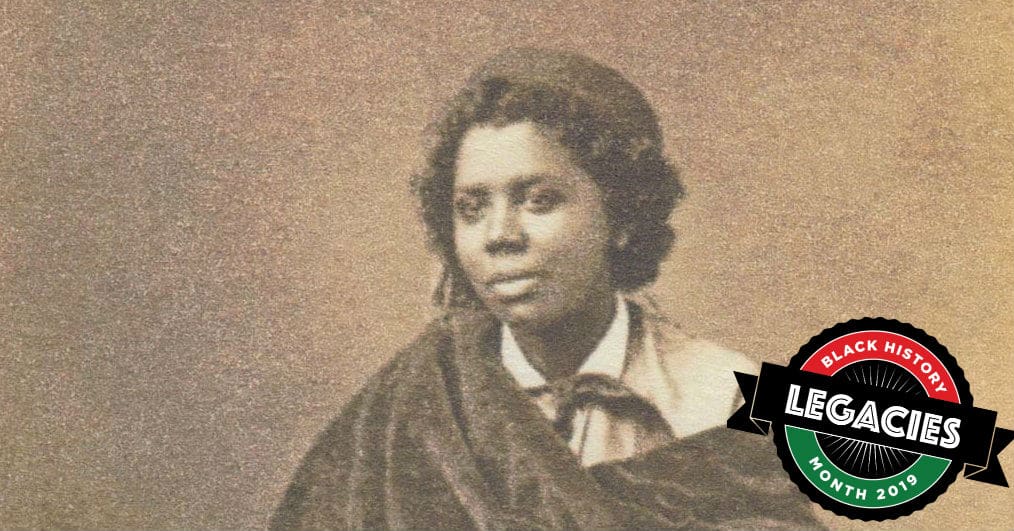It’s hard to secure concrete facts about Edmonia Lewis, perhaps that is why many of us have never heard of her. It doesn’t help that much of her work reportedly didn’t survive. Nonetheless, Lewis earns her claim to fame, often being quoted as the first Black professional sculptor,
as the Smithsonian American Art Museum puts it.
Lewis story, particularly her birth and early childhood, is hard to come by. According to the
Smithsonian, she was born in either Ohio or New York in either 1843 or 1845. Her father was a free Black man, her mother was a Chippewa Indian. She was reportedly orphaned at a very young age, before she was five, and lived with her mother’s tribe until she was 12. However, thanks to her older brother, who had left the tribe and moved to California to become a gold miner, she was given a wealth of education.
She got early schooling in Albany, before eventually attending Oberlin College in Ohio in 1859, where she left behind her Chippewa name “Wildfire” and became “Mary Edmonia Lewis.”
But that chapter of her life was also harrowed and complex. While at Oberlin, she was accused of poisoning two white students, and although she was never convicted, she was targeted and abducted by unidentified assailants and badly beaten. Still, she persisted and remained at Oberlin, but was later accused of stealing art supplies and was ultimately not allowed to graduate.
But she still had her brother’s support and moved to Boston, where she met portrait sculptor Edward Brackett, under whom she began to study her craft. Her first works were medallion portraits of well-known abolitionists. Even without much training, experience or name-recognition, Lewis earned enough money to pay for her first trip to Europe in 1865.
Lewis traveled to London, Paris and Florence before eventually settling down in Rome where she rented out a studio. Many American sculptors lived in Rome at the time due to the availability of white marble, as the Smithsonian notes and Lewis became acquainted with a group of American female sculptors.
But Lewis’ work was set apart from her contemporaries in Rome, as she rarely ever employed Italian workmen and finished most of her work without help – likely, the museum notes, due to her lack of funds as well as her desire to keep her work original.
She specialized in portrait busts of abolitionists, though she was also known for her work on mythological subjects, religious subjects, and other works that pulled from her Native American heritage and drew from the oppression of Black people, setting herself apart from other neoclassical sculptors.
According
to the National Portrait Gallery, her sculpture
Forever Free (1867) was inspired by the Emancipation Proclamation, depicting a Black couple first hearing the news of freedom.
Another one of Lewis’ most famous works,
The Death of Cleopatra (1876), displayed Lewis’ originality, where she – unlike her contemporaries who at the time often showed the Egyptian queen contemplating suicide – sculpted Cleopatra’s death more realistically, which was tagged as “ghastly” and “absolutely repellant” in its day,
according to the Luce Foundation Center, at the Smithsonian American Art Museum. Nonetheless, the sculpture, which was first exhibited at the Centennial Exhibition in Philadelphia, was hailed as the most impressive American sculpture in the show.
Unfortunately, as was mentioned before, many of her works did not survive.
While often drawing inspiration from her heritage,
according to The New York Times, Lewis also at times annoyed with the focus on her race, telling the newspaper in 1878, “I was practically driven to Rome, in order to obtain the opportunities for art culture, and to find a social atmosphere where I was not constantly reminded of my color. The land of liberty had no room for a colored sculptor.”
Even in her death, Lewis’ story remained complex. It was only recently discovered that she had died in London on Sept. 17, 1907, according to a death notice found by Marilyn Richardson, an independent curator, and Lewis’ longtime biographer, the
Times reports.
She reportedly died from Bright’s disease, an inflammation of the kidneys. Curiously enough, her age in the death notice was listed as 42, although she would have actually been 63.
But as Richardson told the
Times: “Nothing about Edmonia Lewis is straightforward.”







